Featured Resources
How to Create a BYOD-Friendly Data Loss Prevention Policy
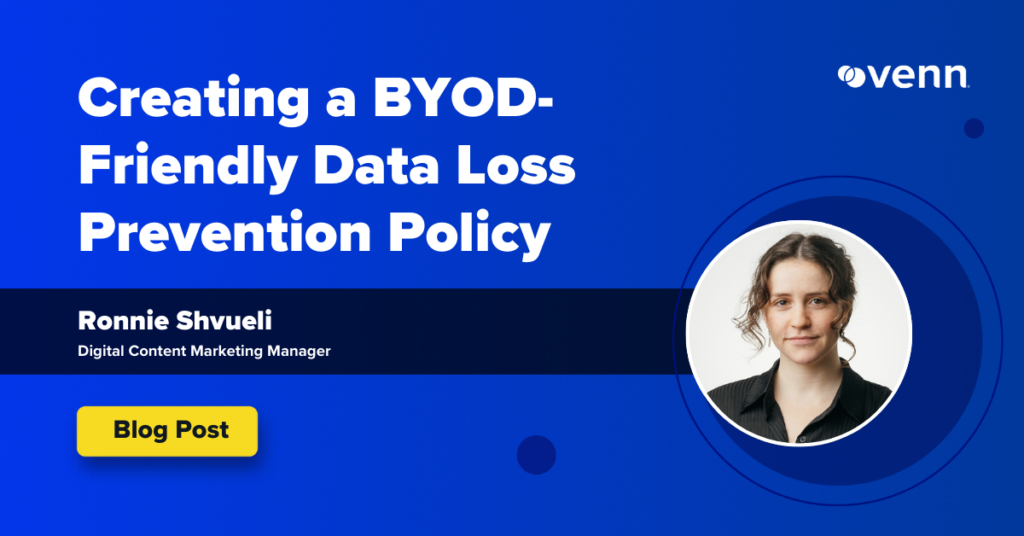

March 13, 2025
Blog
How to Create a BYOD-Friendly Data Loss Prevention Policy
Creating and implementing a data loss prevention policy is a critical security measure for organizations today. But many DLP policies prioritize security at the cost of usability, which leads to employee frustration and, in turn, security workarounds–ultimately increasing the risk of data leaks and shadow IT. Achieving this balance is challenging, as implementing DLP policies […]
BYOD Security: Managing Third-Party Risk
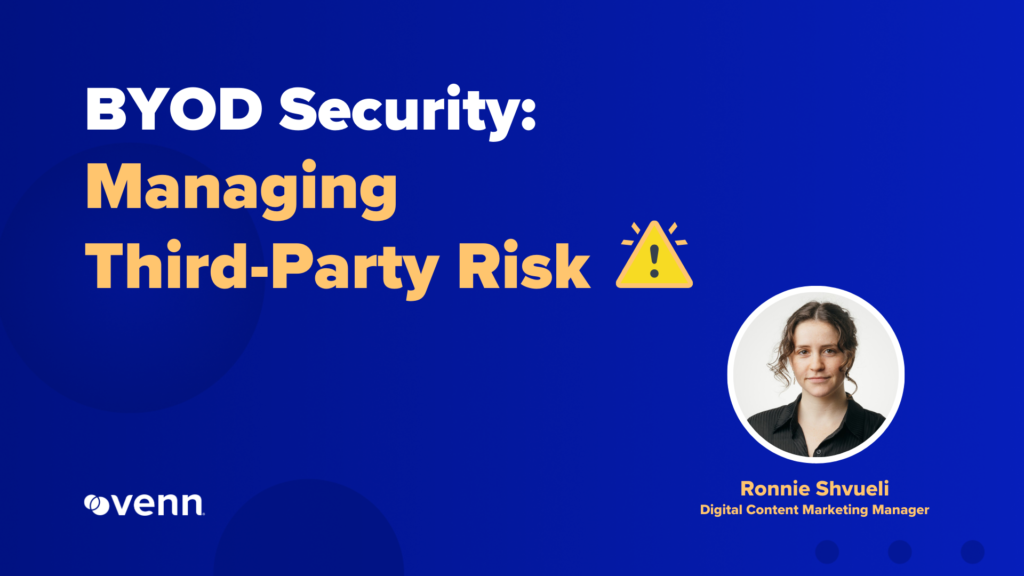

February 18, 2025
Blog
BYOD Security: Managing Third-Party Risk
How a Call Center-Driven Healthcare Company is Tackling BYOD and Operational Efficiency
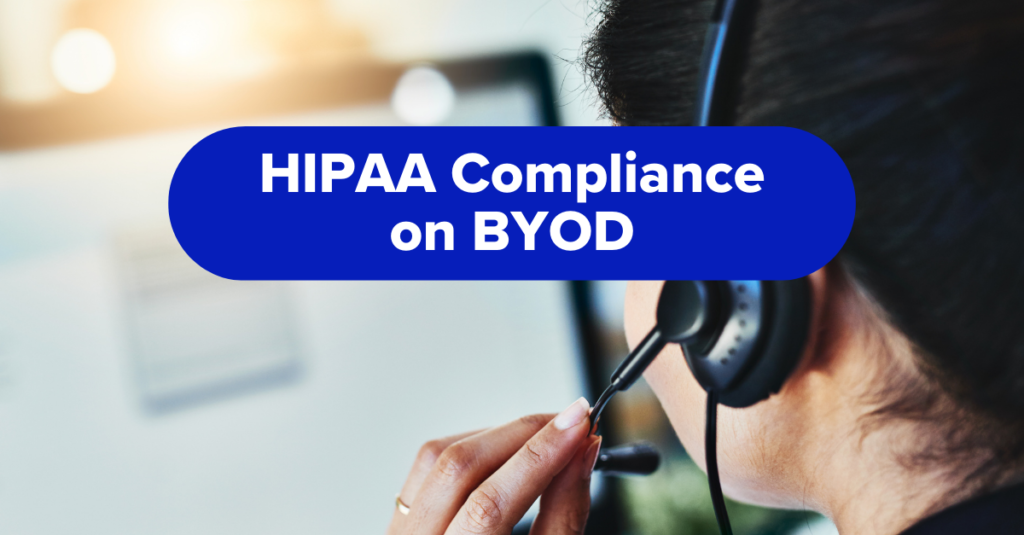

December 17, 2024
Blog
How a Call Center-Driven Healthcare Company is Tackling BYOD and Operational Efficiency
5 Myths About Remote Work Security: What Every IT Leader Should Know
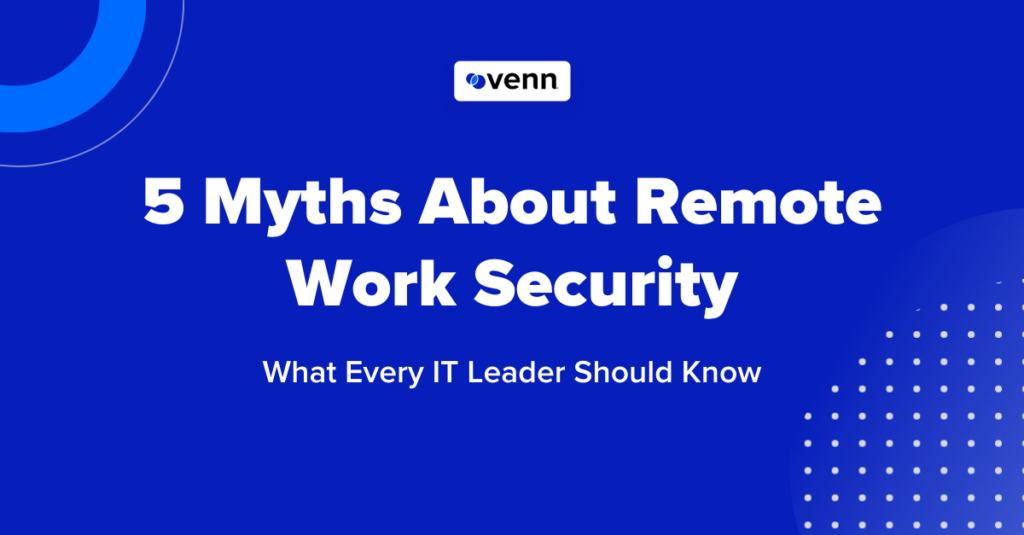

June 12, 2024
Blog
5 Myths About Remote Work Security: What Every IT Leader Should Know
Reducing Your Citrix VDI Footprint: How the Market is Re-Thinking BYOD Security


January 7, 2025
Blog
Reducing Your Citrix VDI Footprint: How the Market is Re-Thinking BYOD Security
To best understand why the market is re-thinking VDI for securing unmanaged and BYOD computers, look no further than our recent discussions with a well-known wholesaler and retailer who engaged with the Venn team to discuss reducing the company’s reliance on Citrix VDI. The prospect is facing mounting challenges with their Citrix environment, particularly in […]
Can Companies Really Secure Sensitive Data on Unmanaged Laptops?
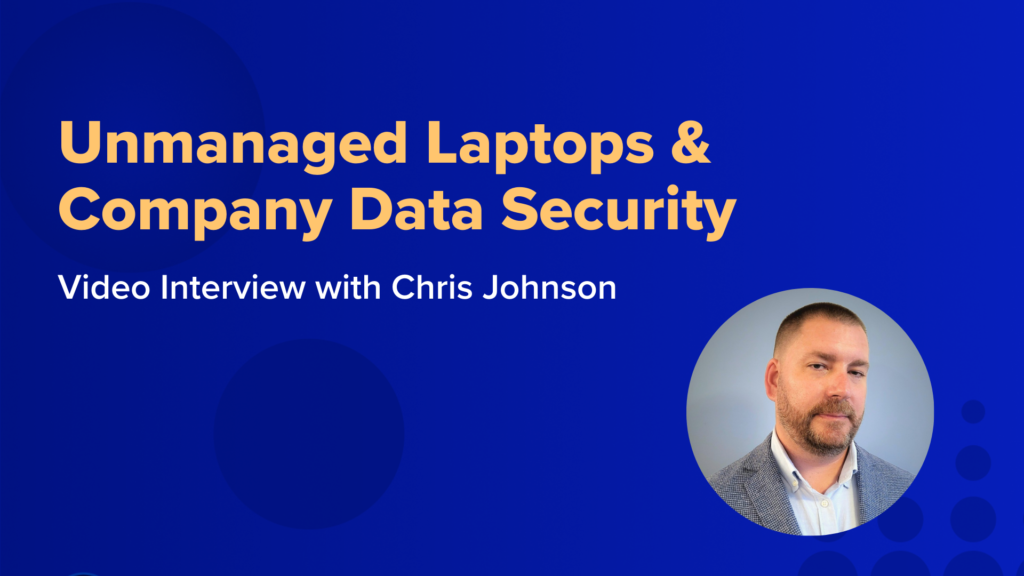

December 20, 2024
Blog
Can Companies Really Secure Sensitive Data on Unmanaged Laptops?
Our Product Manager, Chris Johnson, recently sat down with us to discuss why there is so much skepticism around BYOD security, and how companies can, in fact, protect company data on unmanaged laptops. Security is about minimizing risk, especially when it comes to working from personal devices. Traditional solutions often involve giving IT full control over […]
How to Navigate the Wild West of BYOD Security


December 19, 2024
Blog
How to Navigate the Wild West of BYOD Security
Work is changing – where we work from, when we work, what device we work on, and who owns the device. Bring Your Own Device (BYOD) is quickly becoming recognized as the fast lane to cost savings, increased productivity, improved employee satisfaction, and more device flexibility. In fact, the BYOD market is expected to reach […]
How a Call Center-Driven Healthcare Company is Tackling BYOD and Operational Efficiency


December 17, 2024
Blog
How a Call Center-Driven Healthcare Company is Tackling BYOD and Operational Efficiency
As the healthcare industry continues to adapt to modern challenges, one leading organization found itself at a crossroads. With a workforce of 2,000 remote employees—and plans to expand by adding hundreds of independent contractors—its existing approach to IT was becoming unsustainable. Between strict regulatory requirements, rising costs, and a growing need for operational efficiency, the […]
How IT Teams are Rethinking BYOD Security


December 16, 2024
Blog
How IT Teams are Rethinking BYOD Security
Our founder and CEO, David Matalon, recently spoke to Beau Hamilton from SourceForge about Venn’s revolutionary approach to secure BYOD. Check it out: Venn is dedicated to helping IT teams rethink and secure their BYOD programs. For companies with existing secure BYOD solutions—often relying on Citrix or VDI—we provide a far better alternative by […]
The CIO’s Guide to BYOD Security for Unmanaged Laptops
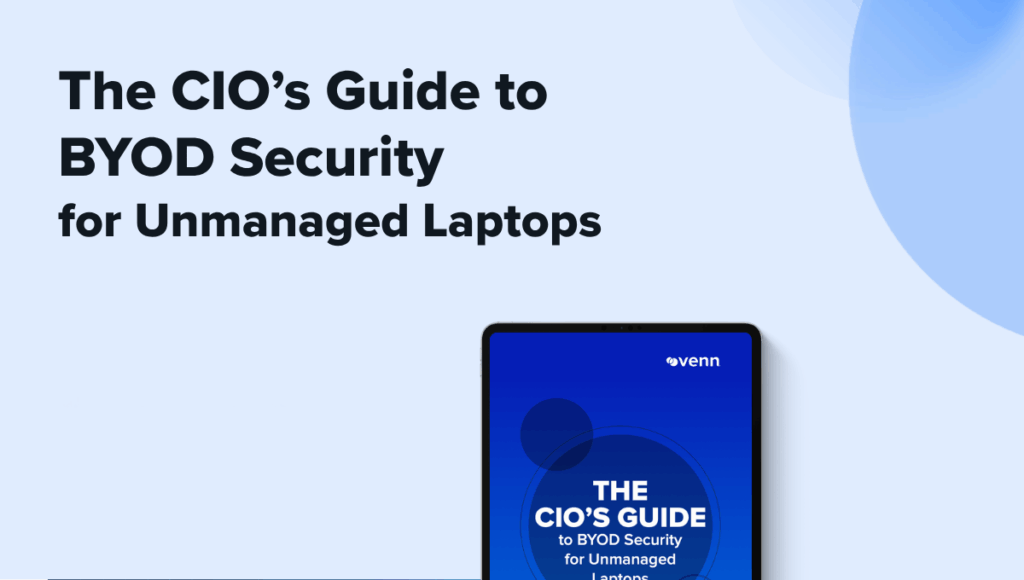

Whitepaper
The CIO’s Guide to BYOD Security for Unmanaged Laptops
BYOD workforces unlock flexibility and efficiency for businesses and employees, but they also introduce unique challenges. In this eBook, you will discover: BYOD workforces are here, and organizations that proactively embrace this shift can not only reduce security risks but also gain a competitive edge. Stay ahead of the curve and unlock the full potential […]
Webinar – Protect the Data, Not the Device: Securing Business Data on BYOD Laptops
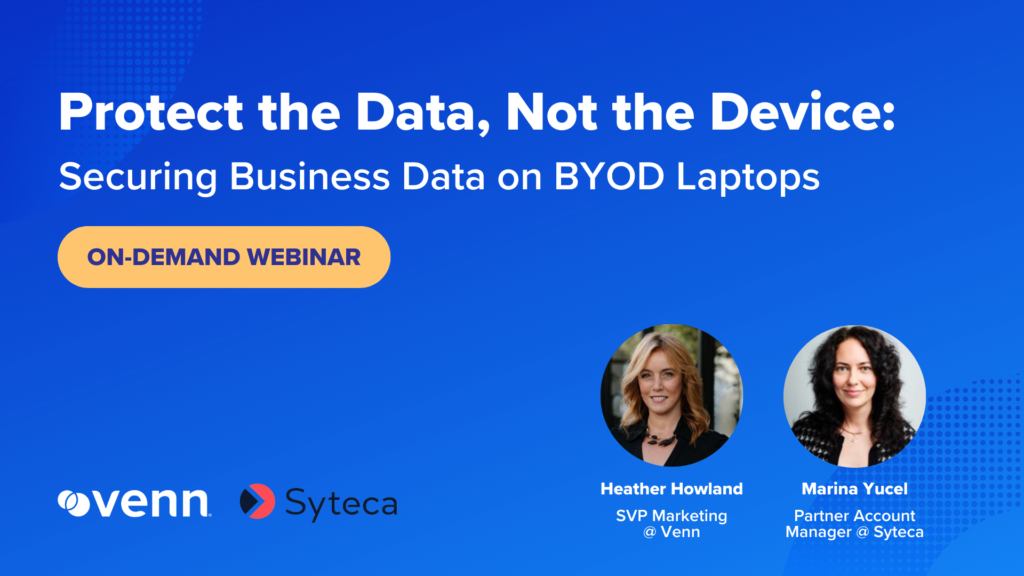

Webinar
Webinar – Protect the Data, Not the Device: Securing Business Data on BYOD Laptops
Ensuring BYOD Security Without Dismissing End-User Privacy
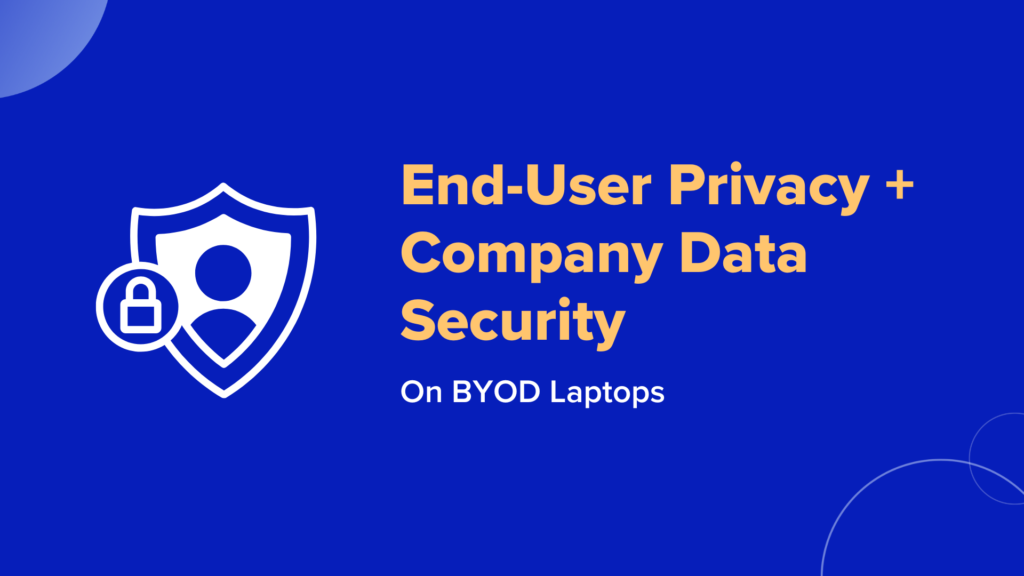

December 13, 2024
Blog
Ensuring BYOD Security Without Dismissing End-User Privacy
When remote employees and contractors use personal laptops for work, being asked to install security software can raise concerns about employer surveillance of personal activities. This unease stems from a natural desire for privacy—nobody wants their company to have access to their personal digital life. In this blog post, we’ll discuss how IT teams and […]
Webinar: Protect the Data, Not the Device – Securing Business Data on BYOD Laptops
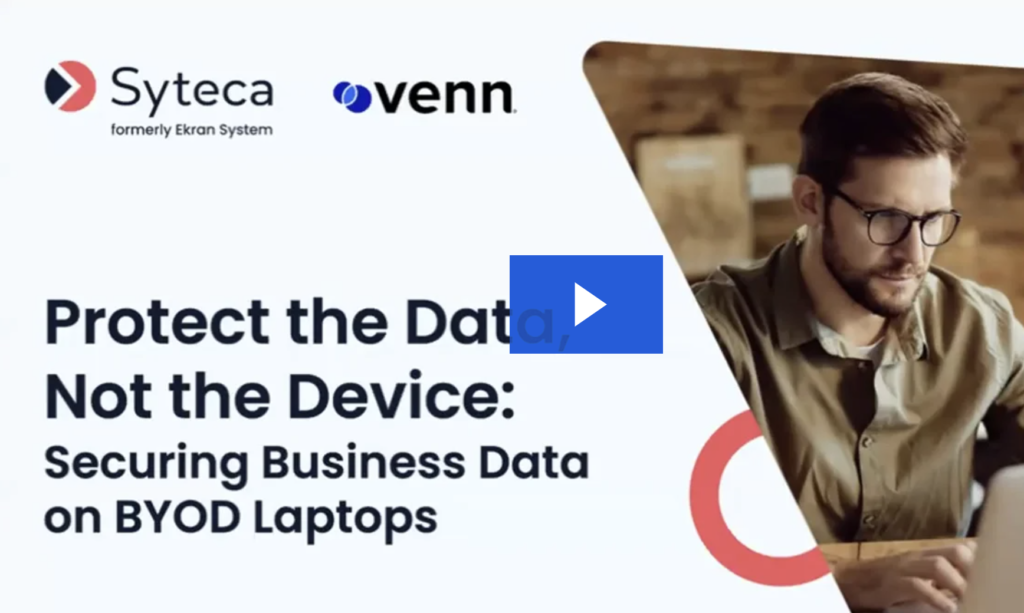

December 12, 2024
Video
Webinar: Protect the Data, Not the Device – Securing Business Data on BYOD Laptops
In today’s remote and hybrid work environments, many organizations allow contractors and employees to use their own devices for work. However, securing sensitive data on BYOD (Bring Your Own Device) or unmanaged computers presents significant challenges, especially when it comes to ensuring productivity and meeting stringent compliance standards like SOC, HIPAA, and PCI. IT and […]